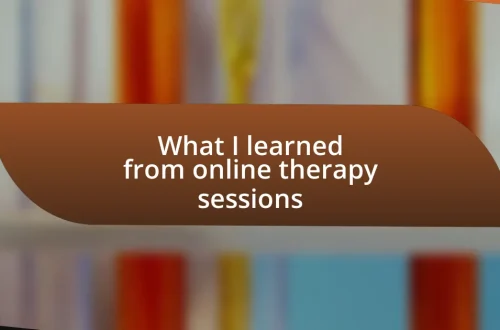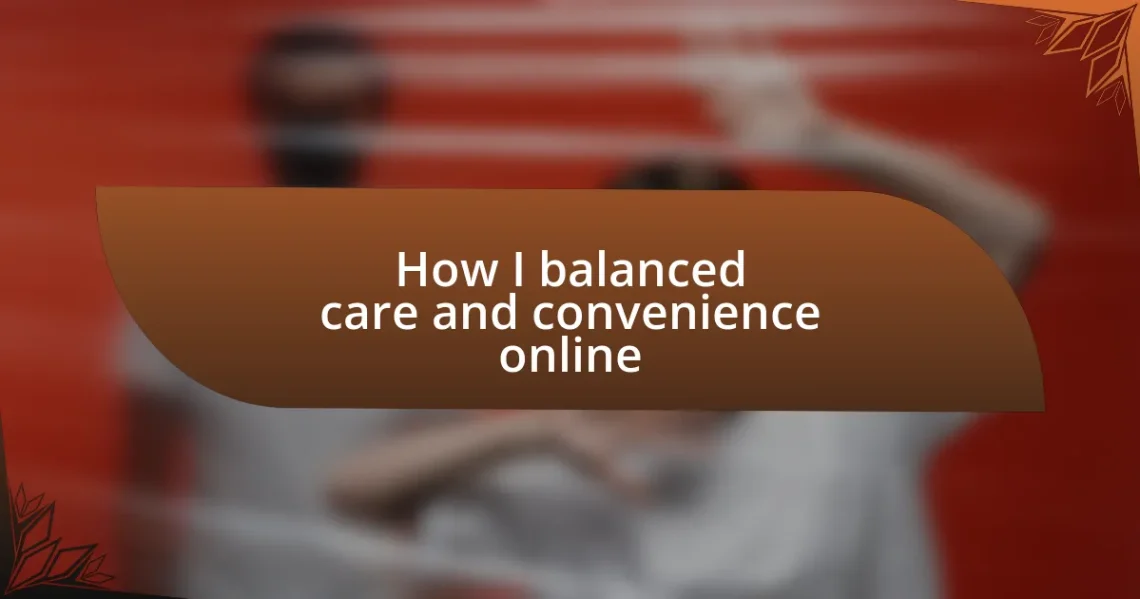
How I balanced care and convenience online
Key takeaways:
- The rise of telehealth and online services enhances convenience and emotional support, offering a balance between accessibility and genuine care.
- Identifying personal care priorities, such as mental and physical health, helps individuals navigate the online health landscape more effectively.
- Evaluating online services requires looking beyond convenience to consider factors like personalized support and emotional connection.
- Balancing personal and professional responsibilities involves prioritizing key tasks and setting boundaries to enhance both productivity and family connections.
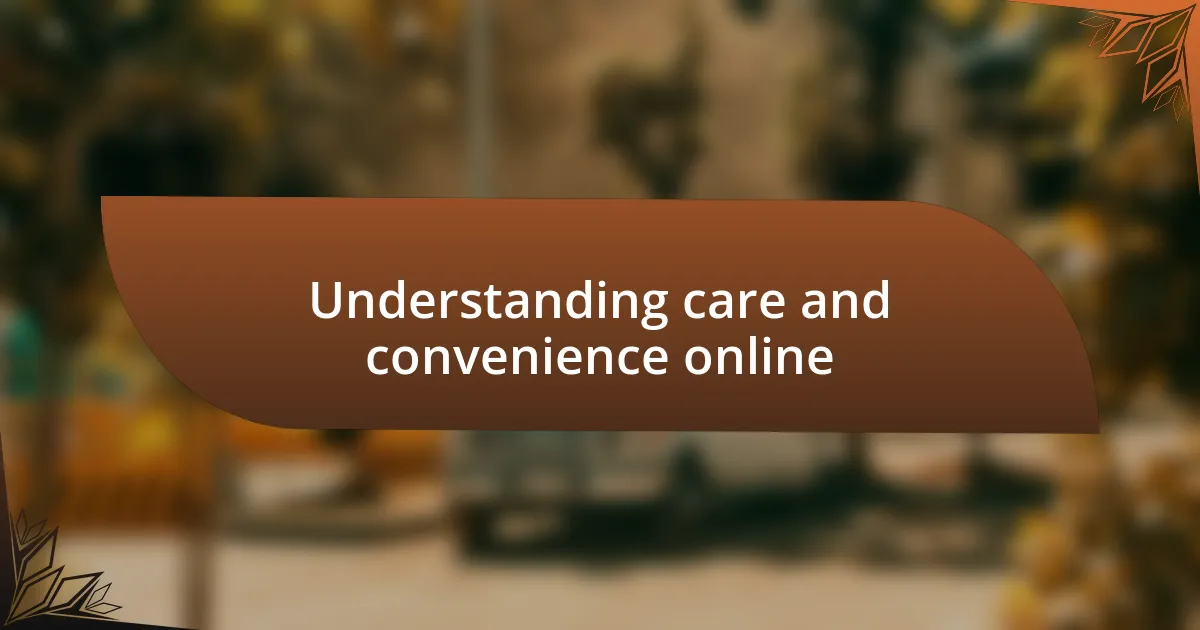
Understanding care and convenience online
In the digital age, care and convenience often collide in surprising ways. I remember a time when I was overwhelmed with work and personal commitments; finding time to schedule healthcare appointments seemed impossible. Yet, with the rise of online services, I discovered telehealth, which offered me the chance to consult with professionals right from my living room.
Convenience doesn’t just mean ease; it also involves a genuine understanding of our needs. I’ve found that the best online platforms go beyond just scheduling—they provide resources, reminders, and follow-ups that make me feel truly cared for. Isn’t it fascinating how a simple notification about an upcoming appointment can ease anxiety and foster a sense of connection?
Moreover, while convenience offers immediate access to services, the emotional aspect of care often gets overlooked. For instance, after a stressful day, being able to connect with a mental health professional online propelled my sense of security and well-being. Have you ever felt that relief when support is just a click away? I’ve learned that balancing these elements isn’t just about practicality; it’s about establishing a supportive network that prioritizes both elements.
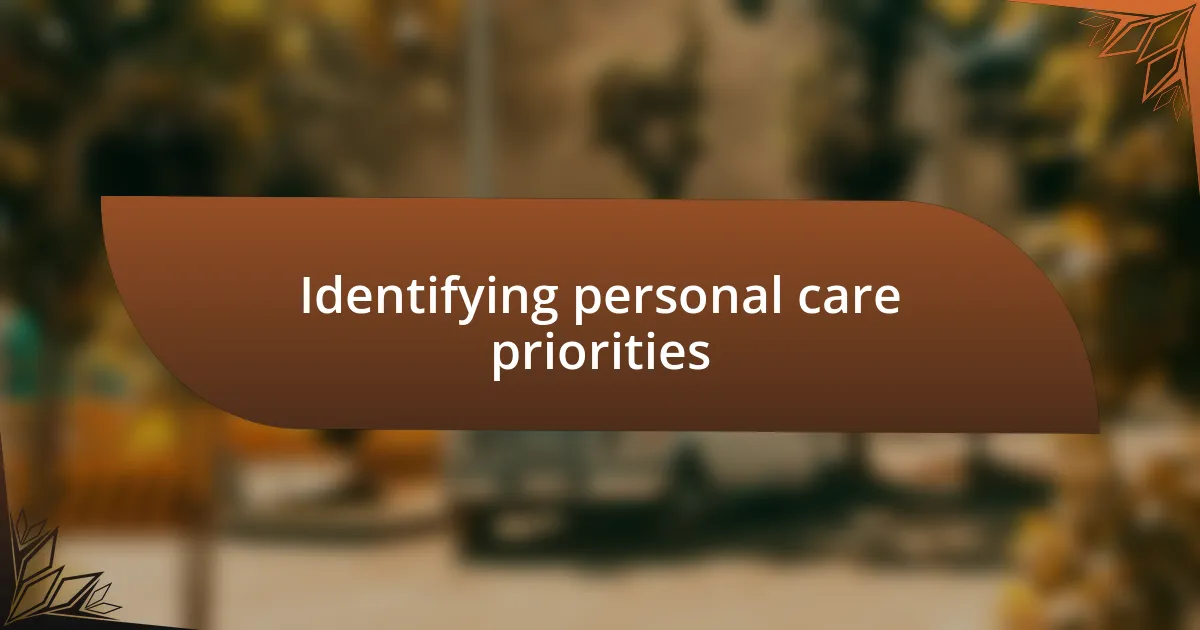
Identifying personal care priorities
Identifying personal care priorities is essential for effectively navigating the online health landscape. I recall my own journey of stepping back and evaluating what truly mattered to me. Among the chaos of daily responsibilities, I recognized that my mental well-being and physical health needed equal attention. This realization helped me prioritize certain aspects of my care routine, ensuring that I wasn’t just checking off tasks but genuinely addressing my needs.
Here are some key priorities I identified in my personal care journey:
- Mental Health: Finding easy access to mindfulness resources and support networks online.
- Physical Health: Prioritizing regular check-ins with healthcare providers through telehealth.
- Convenient Scheduling: Utilizing calendar apps to block time for self-care activities.
- Researching Needs: Taking the time to explore credible sources and understand my health conditions.
Through this reflection, I discovered that my care priorities weren’t just about convenience; they involved a deeper understanding of what I needed in different aspects of life. Focusing on these priorities enriched my online interactions and empowered me to make more informed decisions about my health.
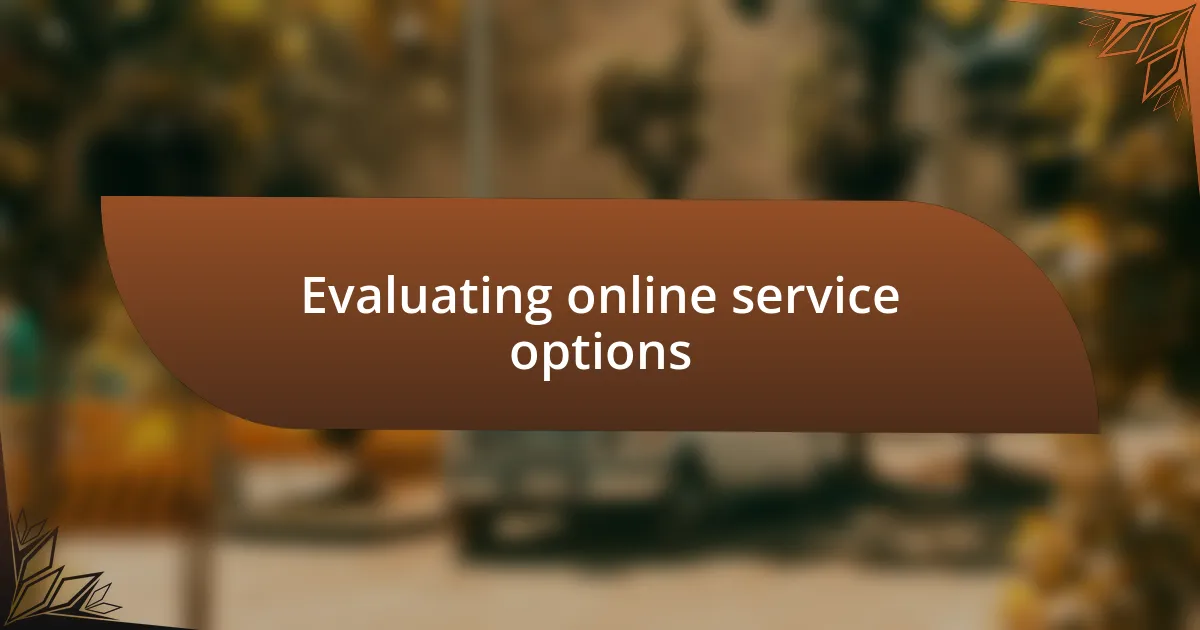
Evaluating online service options
When evaluating online service options, I realized that not all platforms meet individual needs equally. For instance, while some telehealth services offer quick consultations, they may lack the personalized follow-up that is crucial for effective care. I remember signing up for a wellness app that promised convenience, only to find that it didn’t account for my unique health profile, leaving me feeling somewhat unsupported.
To make an informed decision, I considered factors like user experience, accessibility, and the availability of specific services relevant to my needs. I often refer to my experience with a mental health platform, which initially impressed me with its sleek interface. However, after a few sessions, I felt that the lack of personalized interaction left me yearning for a deeper connection. This taught me the importance of evaluating not just the convenience of an online service but also the emotional support it offers.
Ultimately, I found that creating a comparison table would help clarify the distinctions among various services. The table below illustrates some options I considered, emphasizing the balance of care and convenience that each provides.
| Service | Features |
|---|---|
| Telehealth A | Quick consultations, personalized follow-up |
| Wellness App B | User-friendly interface, lack of personal support |
| Online Therapy C | Affordable sessions, strong therapist-client connection |
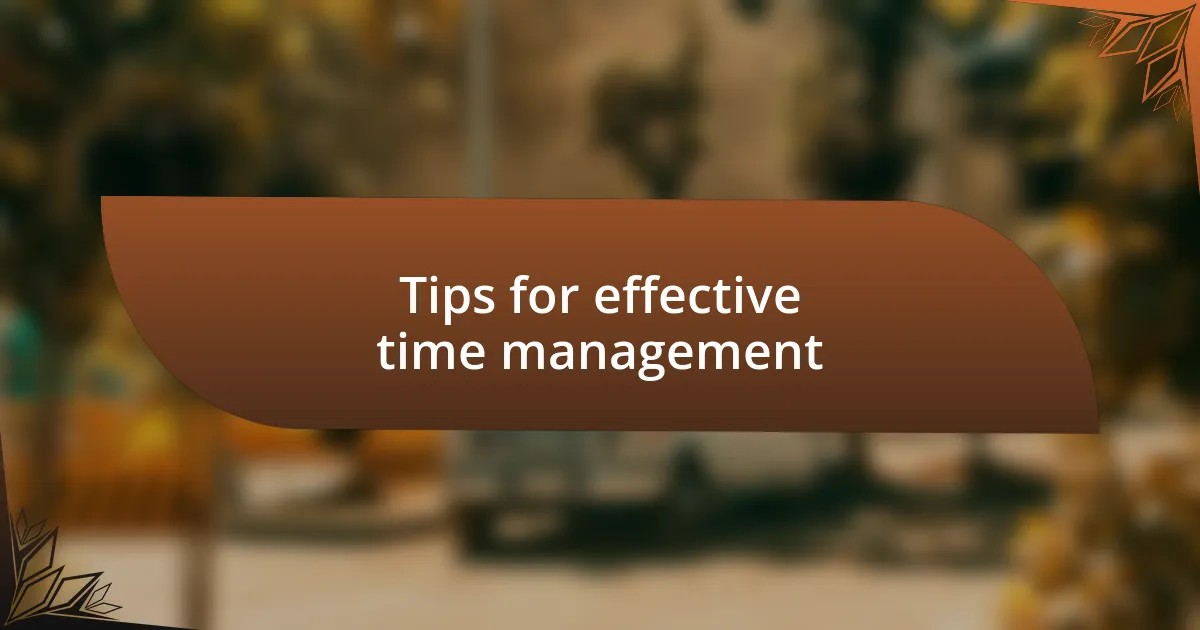
Tips for effective time management
When it comes to managing time effectively, I’ve found that prioritizing tasks is essential. For example, I use a simple method called the Eisenhower Matrix, which helps me categorize tasks based on urgency and importance. This way, I can tackle what truly matters first, instead of getting lost in a endless list of duties that might not even require my immediate attention.
Another technique that has worked wonders is setting specific time blocks for different activities. I remember a time when I was overwhelmed with various commitments and found myself multitasking poorly. By dedicating 30 minutes solely to emails each morning, I not only increased my efficiency but also noticed that I was less stressed throughout the day. Isn’t it amazing how focusing on one task at a time can reduce that nagging feeling of chaos?
Lastly, I can’t stress enough the value of using digital tools to stay organized. I leaned into a task management app that sends me reminders and breaks projects into manageable steps. It’s like having a personal assistant, but without the need for coffee breaks! This digital support keeps me accountable and allows me to visualize my progress, making it easier to stay on track and feel accomplished.
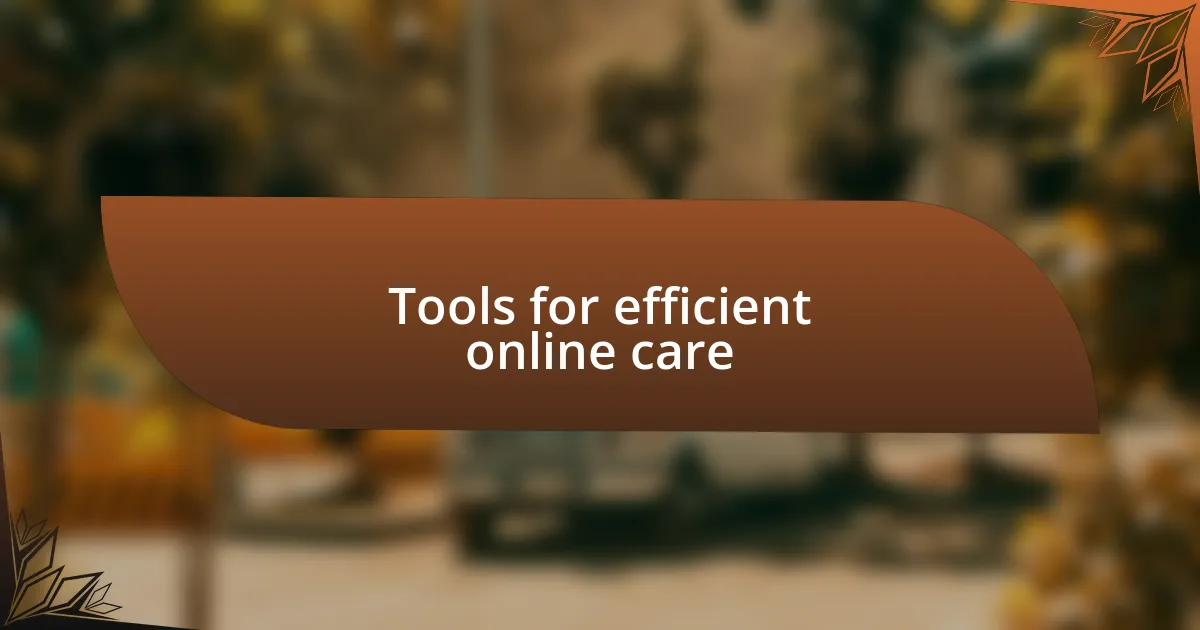
Tools for efficient online care
When it comes to tools for efficient online care, I’ve truly found that telehealth platforms have revolutionized how I manage my health. I remember scheduling a virtual appointment for a routine check-up, and it was a game-changer. No more waiting rooms! Just a simple click to connect with my doctor from the comfort of my home. It made me realize how technology can save time while still providing quality care.
Using communication tools like secure messaging apps has also transformed my healthcare routine. I often have questions or need clarifications between visits, and being able to message my healthcare provider directly allows for quick responses. It may seem trivial, but that immediate access gives me peace of mind. Have you ever found yourself worrying about something for days before getting an answer? I definitely have, and this real-time communication brings a sense of relief that’s invaluable.
Additionally, I can’t overlook the importance of personal health apps for tracking my well-being. Once, I started tracking my hydration and physical activity through an app, and I was amazed at how it motivated me. It felt like I had a virtual cheerleader urging me to make healthier choices. The data it provided empowered me to set goals and monitor my progress, making each small victory feel significant. Isn’t it fascinating how the right tools can enhance our connection to our health?
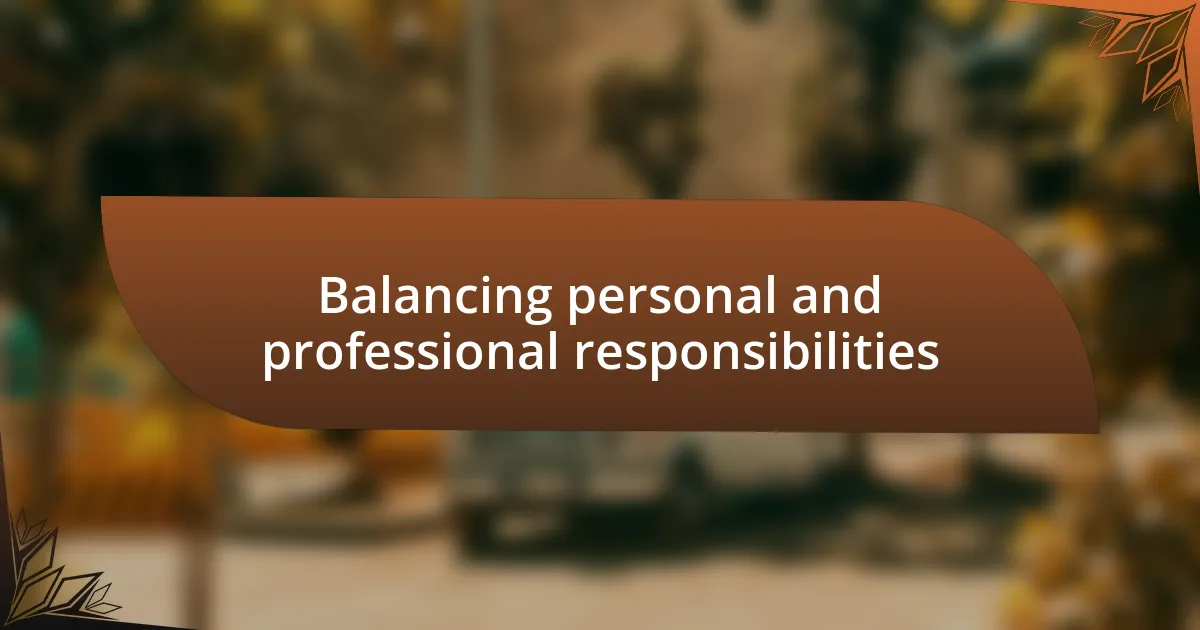
Balancing personal and professional responsibilities
Finding the right balance between personal and professional responsibilities is often a challenge for me. I recall a particularly busy period when work deadlines collided with family obligations. It was during this time that I learned to prioritize tasks effectively. By listing out what truly mattered each week, I could focus on high-impact activities that aligned with both my career and personal life.
A moment that stands out occurred when I had an important project due the same week my child had a school performance. I decided to be fully present for my child, rearranging my work schedule to accommodate this priority. The joy on their face during that performance reminded me that moments like these are irreplaceable, and it reinforced my commitment to integrating my personal and work responsibilities. How do you navigate such conflicts? I found that flexibility and clear communication with my team allowed me to meet my professional expectations while still being there for my family.
Additionally, I’ve discovered that setting boundaries is crucial in maintaining this balance. For instance, I made it a point not to check work emails during family dinner time. This small adjustment created a dedicated space for connection with my loved ones, nurturing our relationships while ensuring I remained productive during work hours. Have you ever noticed how much more fulfilling life feels when you draw clear lines between roles? I can certainly attest to the positive effects of prioritizing my personal time; it has made a profound difference in both my happiness and output.
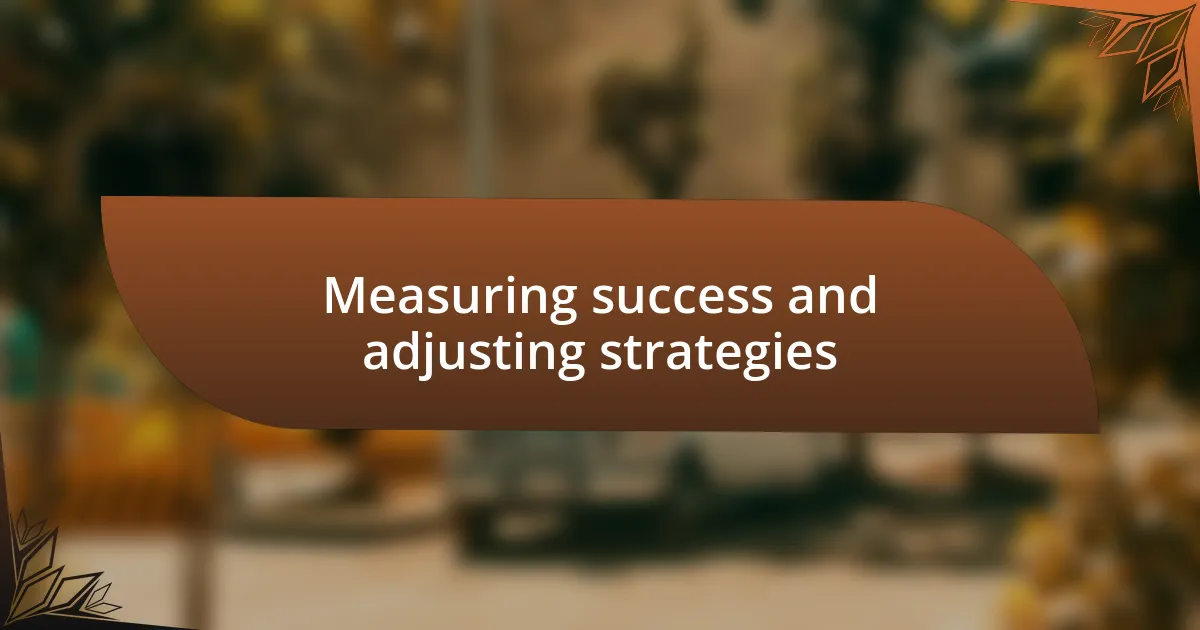
Measuring success and adjusting strategies
Measuring success in balancing online care and convenience is often about tracking specific outcomes. For me, this meant not just focusing on completed tasks but also on how these tasks impacted my wellbeing and family life. I remember taking a step back after a hectic month, realizing that while I was productive, my mental and emotional health was stretched thin.
I started using simple metrics, like how much time I spent engaging with my family versus work. It’s fascinating to reflect on those moments; I felt a surge of relief when I saw my “family time” increase, showing me that my adjustments were making a difference. Have you ever thought about the numbers that truly tell your story? I learned that sometimes, evaluating satisfaction and fulfillment can be just as important as tracking productivity.
Adjusting my strategies became a dynamic process after recognizing these patterns. For instance, I implemented weekly check-ins with myself to assess where I was succeeding and where I was not. There were times I faced unexpected distractions, but I adapted by setting stricter limits on my online activities during family hours. The more I engaged in this reflective practice, the clearer my path to balance became, and I felt empowered to make informed changes. How do you go about tweaking your strategies? For me, this ongoing evaluation transformed the way I approached both my responsibilities and my personal growth.



